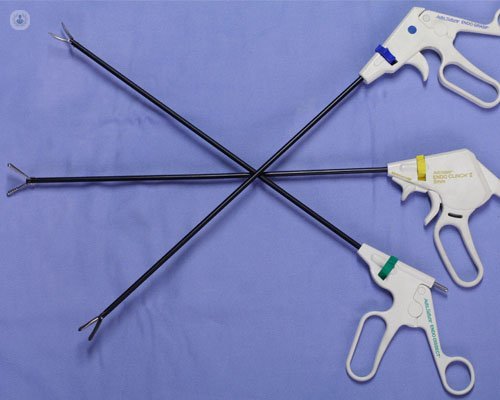Laparoscopic intervention: surgery without large incisions
Written by:Laparoscopy is a technology that enables a video camera to avoid large incisions for abdominal operations.
Use small wounds rather than a big cut reduces postoperative pain and wound infections and with them, hernias, respiratory complications, and hospital stay bedridden.
Using laparoscopy
In some interventions, as is the case of gallbladder removal or repair of hiatal hernia, major complications arising from the abdominal incision and therefore are the ones that benefit most from the use of laparoscopy. But really, can be performed laparoscopically most of the interventions performed in General Surgery :
- bile duct surgery
- surgery and colorectal cancer
- gastric cancer surgery and even pancreatic
- the removal of the appendix, adrenal gland and spleen
- other interventions such as hernias, liver resections, the reconstruction of the bowel or abdominal exploration.

Intervention by laparoscopy: procedure
In general, the type of procedure performed by laparoscopy should be the same as would be made by conventional route, being the only difference approach.
The intervention begins with the placement of a tube (trocar) allowing the introduction of the video camera. The abdomen is then filled with a gas that increases the working space specialist and other tubes are placed (the number and placement depends on the intervention to be performed) by the surgical material is introduced, specially designed for these interventions.
On the other hand, no special preparation for an intervention by laparoscopy with the only limitation of the surgical team experience is not necessary.
Risks of laparoscopy
Like any surgical procedure, laparoscopy has its complications. Of these, the most common is the need to convert to traditional surgery for failing to complete the operation by laparoscopy. You can also submit bowel perforation by introducing the trocars or bleeding in the abdominal wall. The other complications are, to a greater or lesser extent, the same as with the traditional approach.



